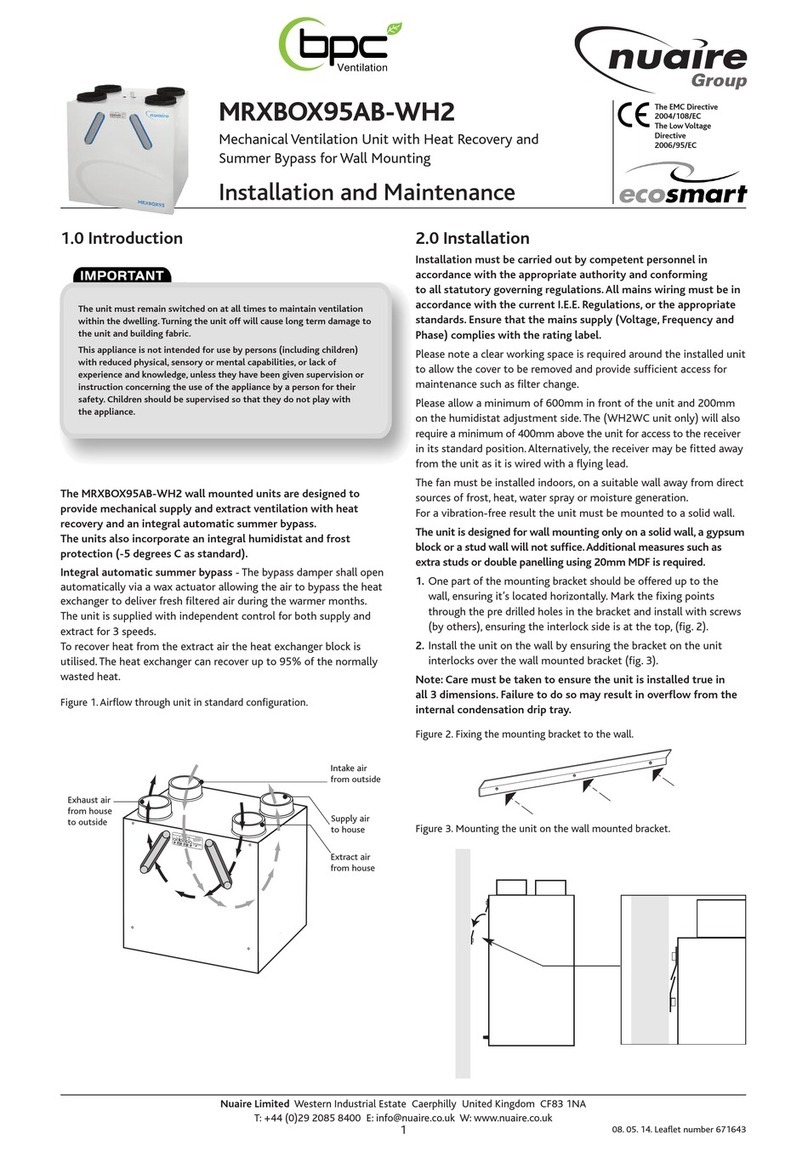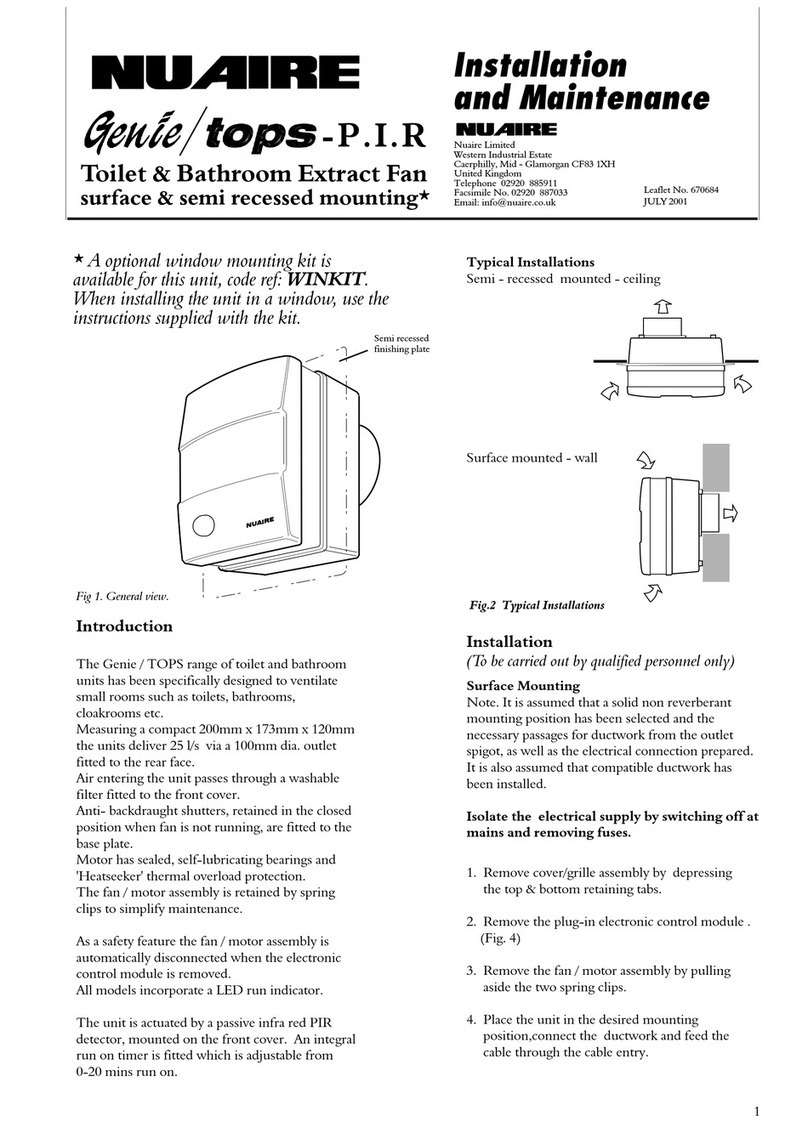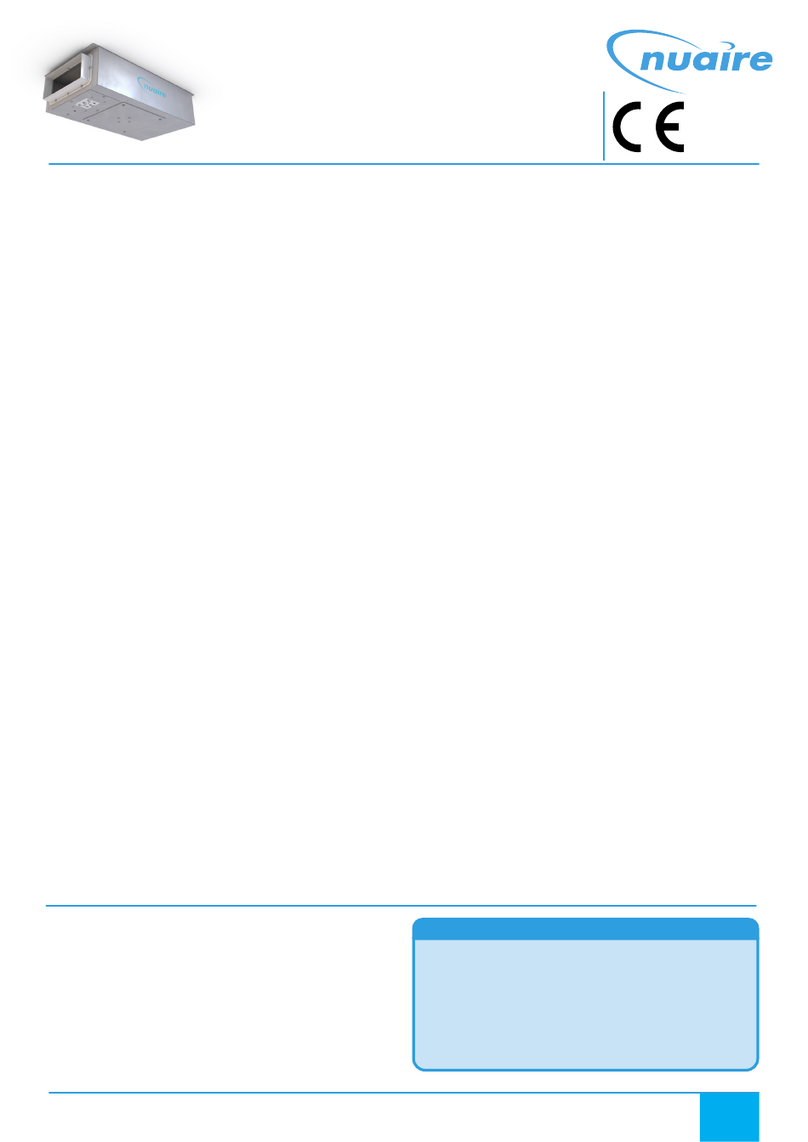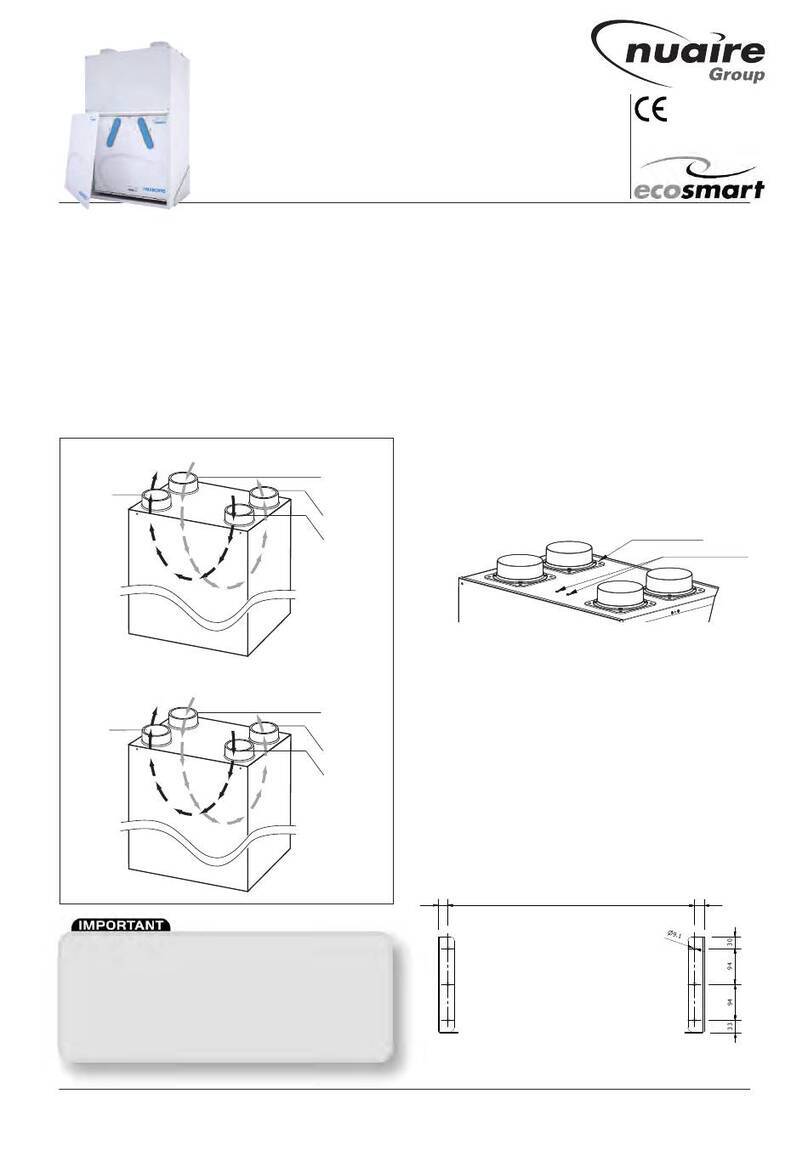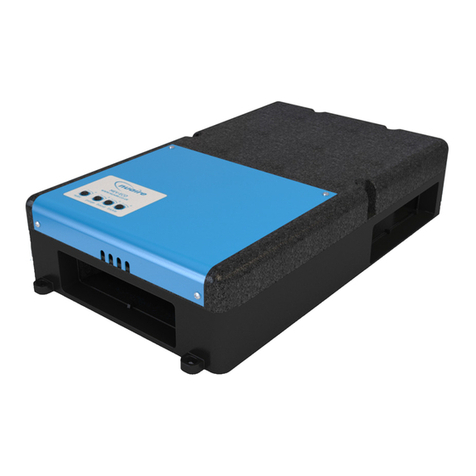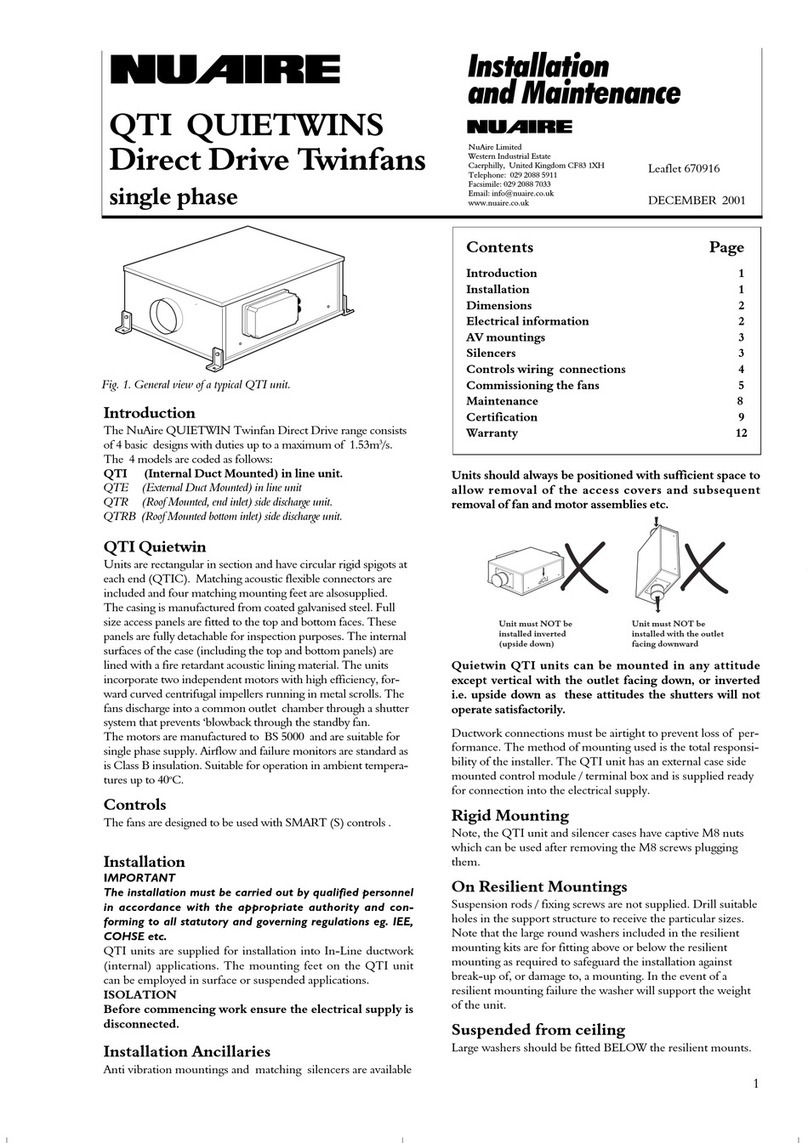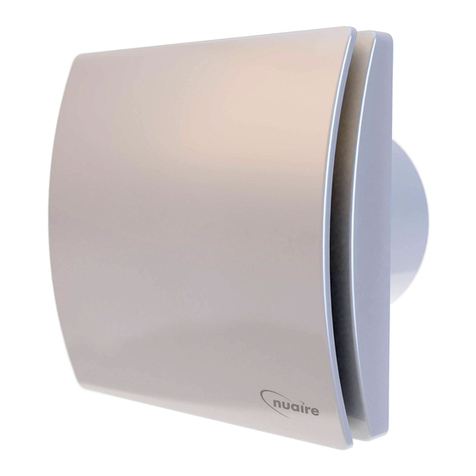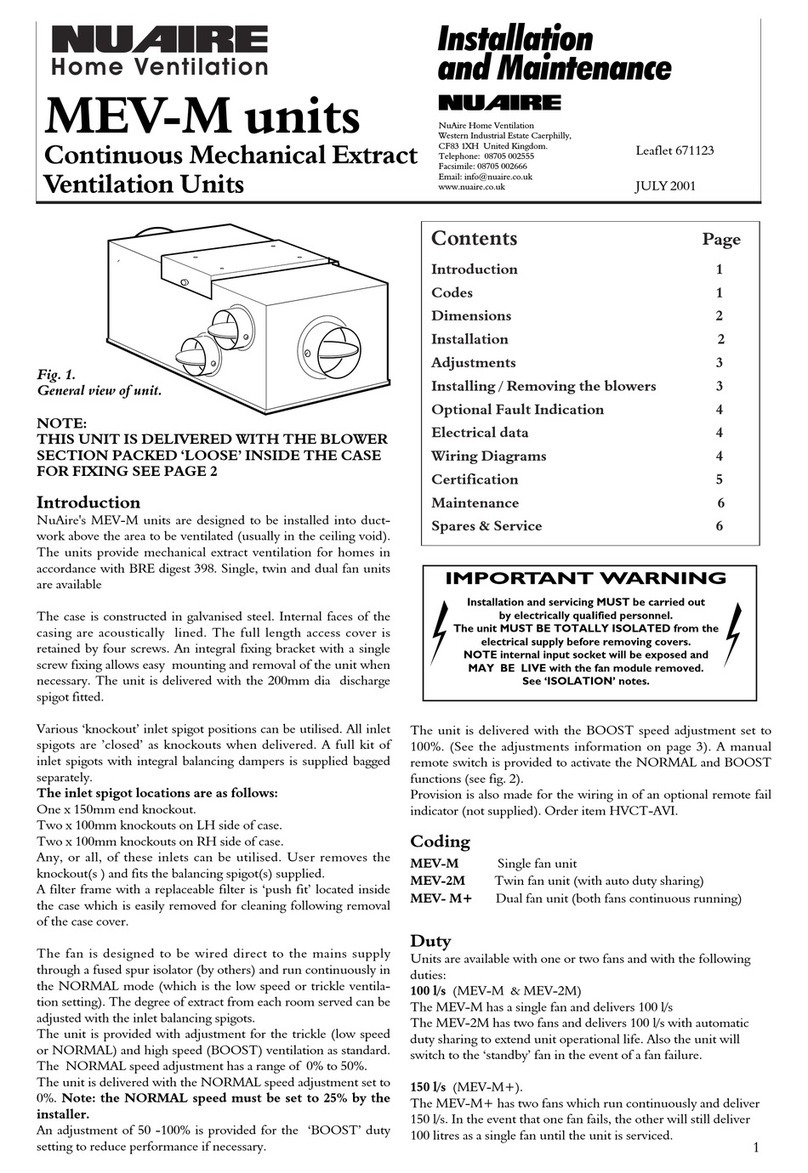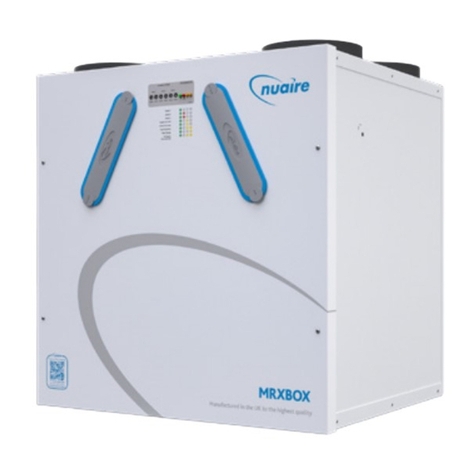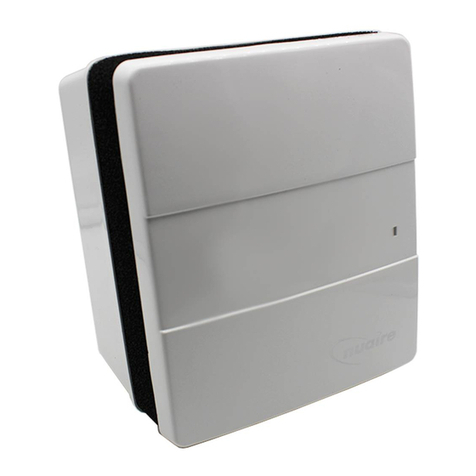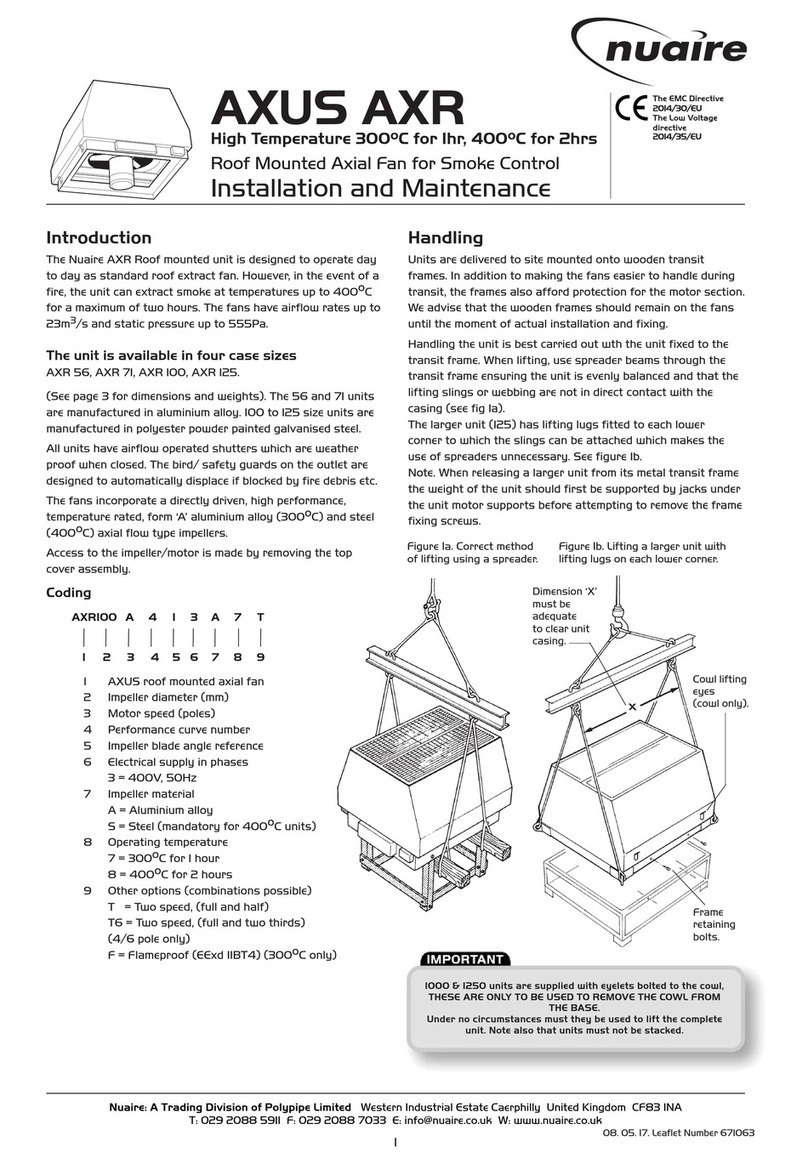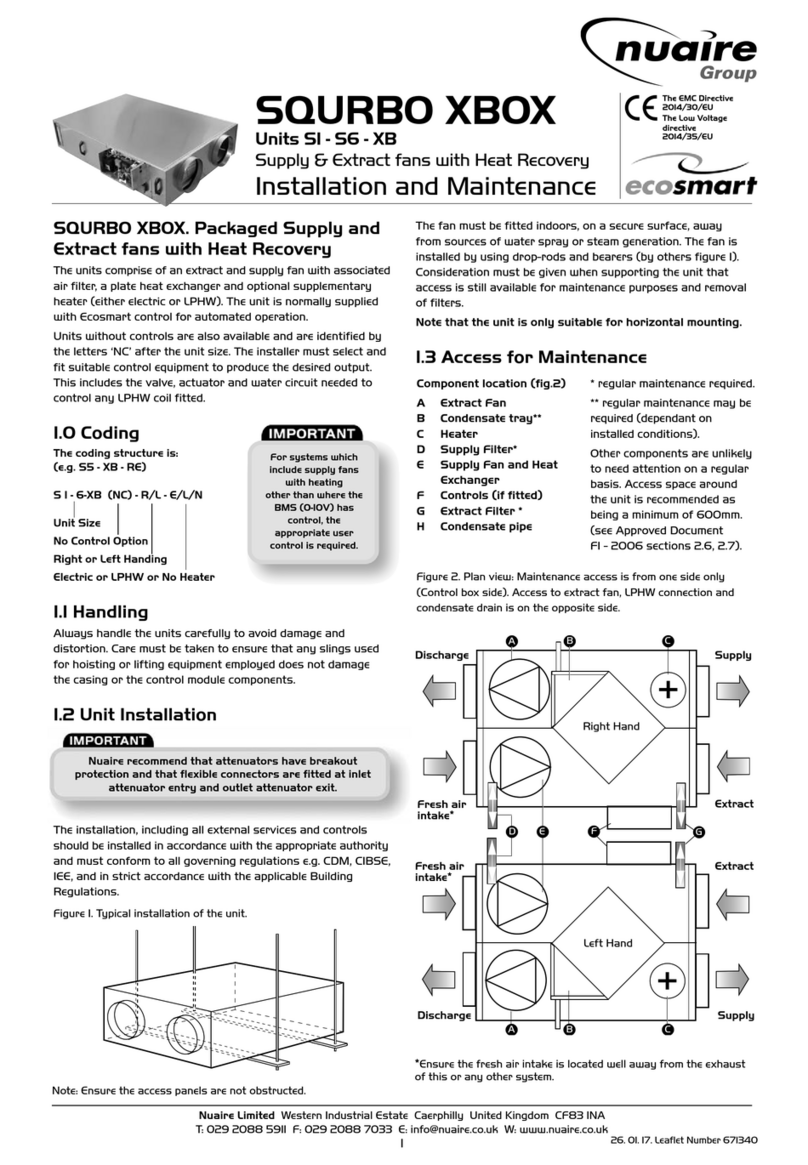
327. 11. 17. Leaflet number 671643
Installation and Maintenance MRXBOX95AB-WH2
2.4 Ducting
t is recommended that rigid ducting be used it all times.
Flexible ducting has a very high resistance and it is impossible to
calculate how much resistance will be on a system if used.
f used, the flexible ducting must be kept to a minimum and should
always be pulled taut. A maximum of 300mm should be used on
each leg.
To prevent condensation on the exterior of the outside air inlet duct
and the air outlet duct from the unit, these ducts should be insulated
with material having a thermal resistance of >0.625m2 K/w.
Ducting must be installed in such a way that resistance to airflow is
minimised. Bends should be kept to a minimum.
A minimum distance of 200mm between the appliance and any bends
in ductwork is recommended. deally 200mm diameter or 204 x 60mm
rectangular ducting should be used.
Ducting joints must be sealed with silicone type sealant and shall be
adequately and reliably fixed to the appliance.
2.5 Ventilation flow rates
Table 1.
ADF 2010 – Extract ventilation rates
Room Min high rate Min low rate
Kitchen 13 l/s
Utility room 8 l/s
Bathroom 8 l/s
Sanitary
accommodation 6 l/s
Table 2.
Whole dwelling ventilation rates
Number of bedrooms in dwelling
12345
Whole 13 17 21 25 29
dwelling
ventilation
rate l/s
1, 2
Notes:
1, In addition, the minimum ventilation rate be should be not less
than 0.3 l/s per m2of internal floor area.
(This includes all floors, e.g. for a two-story building add the
ground and first floor areas).
2, This is based on two occupants in the main bedroom and a single
occupant in all other bedrooms. This should be used as the default
value. If a greater level of occupancy is expected add 4 l/s per
occupant.
2.6 ADF 2010 Ventilation calculations
Design of MVHR systems
The MVHR system has been sized for the winter period. Additional
ventilation may be required during the warmer months and it has
been assumed that the provisions for purge ventilation (e.g. openable
windows) could be used.
Step 1: For any design air permeability, determine the whole dwelling
ventilation supply rate from Table 2.
As an alternative where the design air permeability is intended to be
leakier than (>) 5m3/(h.m2) 50 Pa, allow for infiltration for all dwelling
types by subtracting from the whole dwelling ventilation supply rate
from Table 2; 0.04 x gross internal volume of the dwelling heated
space (m3).
Step 2: Calculate the whole dwelling extract ventilation rate by
summing the individual room rates for ‘minimum high rate’ from
Table 1.
(For sanitary accommmodation only, as an alternative, the purge
ventilation provisions given in ADF 2010 can be used where security is
not an issue. n this case ‘minimum high extract rate’ for the sanitary
accommodation should be omitted from the step 2 calculation).
Step 3: The required airflow rates are as follows:
nthe maximum whole dwelling extract ventilation rate (e.g.
boost) should be at least the greater of step 1 and step 2.
Note that the maximum individual room extract rate should
be at least those given in table 1. for minimum high rate.
nthe minimum air supply rate should be at least the whole
building ventilation rate found in step 1.
For Scotland refer to BRE Digest 398.
For further information refer to “Domestic Ventilation Compliance
Guide” www.planningportal.gov.uk/buildingregulations/approved
documents/partl/compliance
Total extract rate should
be at least the whole
dwelling ventilation rate
given in table 2.
Any air intake terminal MUST be installed in accordance with the
appropriate regulation.
As a guide, the BS5440 series of British Standards deals with this issue
and currently states that an air intake must be at a minimum distance
of 300mm from a gas boiler balanced flue.
Installers are advised to be aware of the requirements of this standard
when installing ‘through the wall’ supply air ducting.



